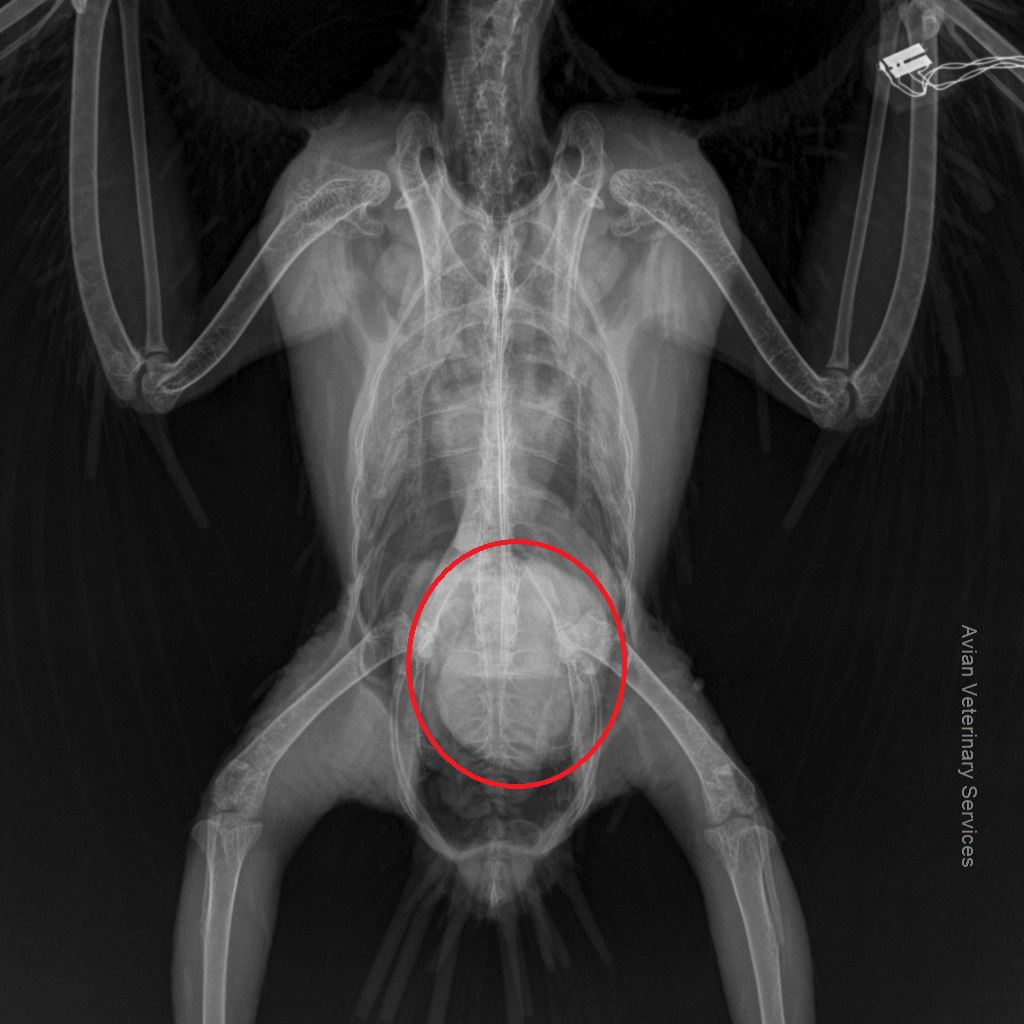 Gus, a normally very jolly, chatty Grey Parrot, who on occasion has been known to greet his vet with “I’ll tan your arse!!” presented in decidedly poor form with unusually, nothing to say for himself. He was also off his food and dehydrated with vomiting and diarrhoea. As vomiting is considered an emergency in the avian patient he was immediately admitted for fluid/supportive therapy to stabilise him for further diagnostics to try and establish the underlying cause.
Gus, a normally very jolly, chatty Grey Parrot, who on occasion has been known to greet his vet with “I’ll tan your arse!!” presented in decidedly poor form with unusually, nothing to say for himself. He was also off his food and dehydrated with vomiting and diarrhoea. As vomiting is considered an emergency in the avian patient he was immediately admitted for fluid/supportive therapy to stabilise him for further diagnostics to try and establish the underlying cause.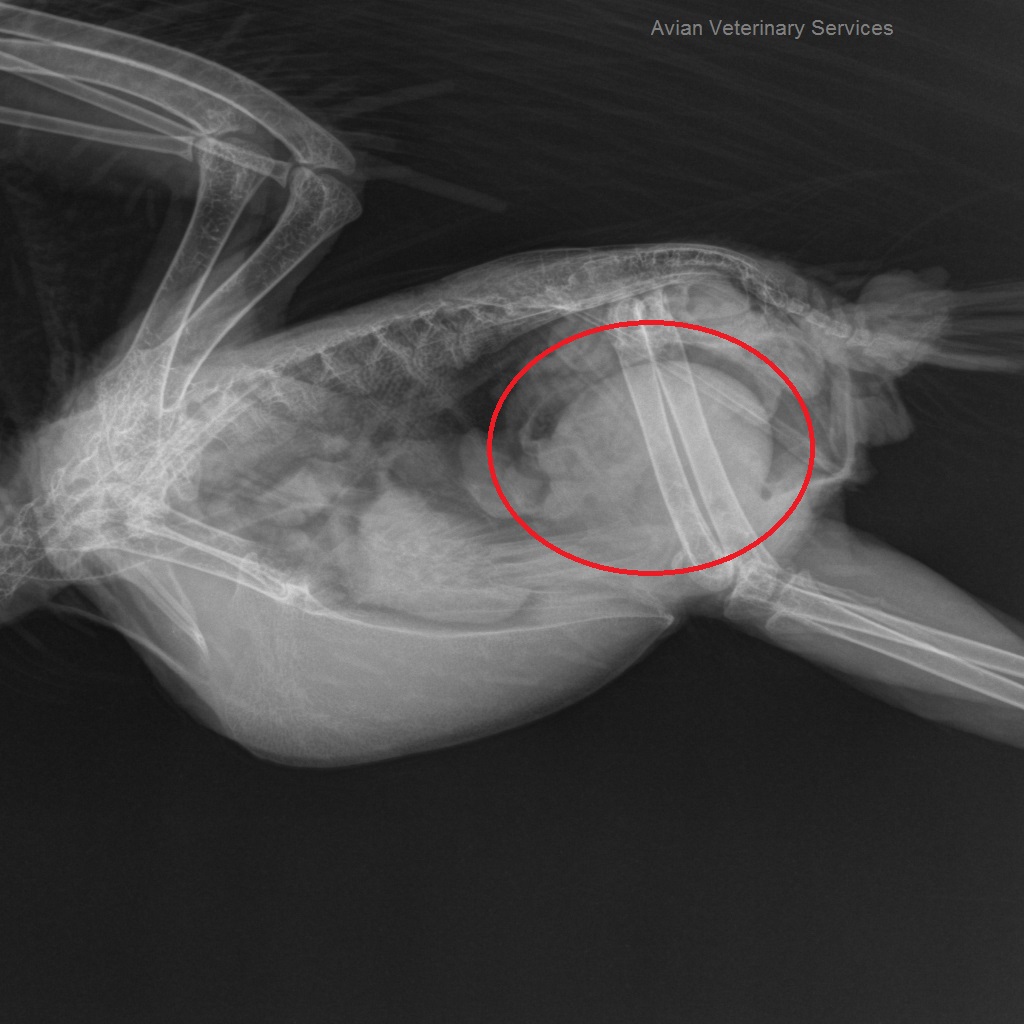
Faecal analysis was normal and the only abnormality on his bloodwork was an elevated white blood cell count consistent with infection and possible tissue injury. A series of x-rays following a barium meal indicated an extremely dilated ventriculus (gizzard or muscular part of the stomach) containing unidentified foreign material.
At this point we were unsure as to the cause of the enlarged gizzard as proventricular dilatation/macaw wasting disease caused by Avian Borna Virus (ABV) can cause the stomach to dilate and subsequently over fill, or and more likely, the impacted material had actually caused the enlargement with increasing muscle mass as the stomach worked hard to try to ‘digest’ it. Fortunately, Gus ultimately tested negative for ABV.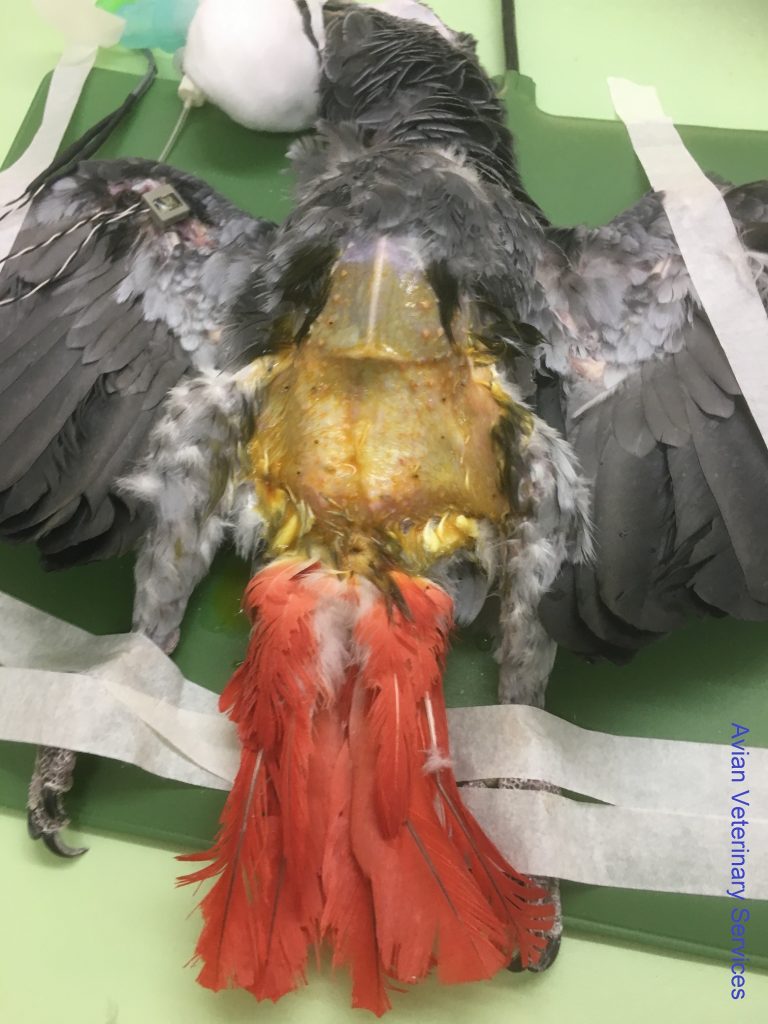
Often small amounts of foreign material (even metal!) can be broken down and moved on by the powerful grinding action of the gizzard if helped along by liquid tube feeds, which seemed to pass through fine, however as soon as even soft foods were introduced Gus would once again start to vomit.
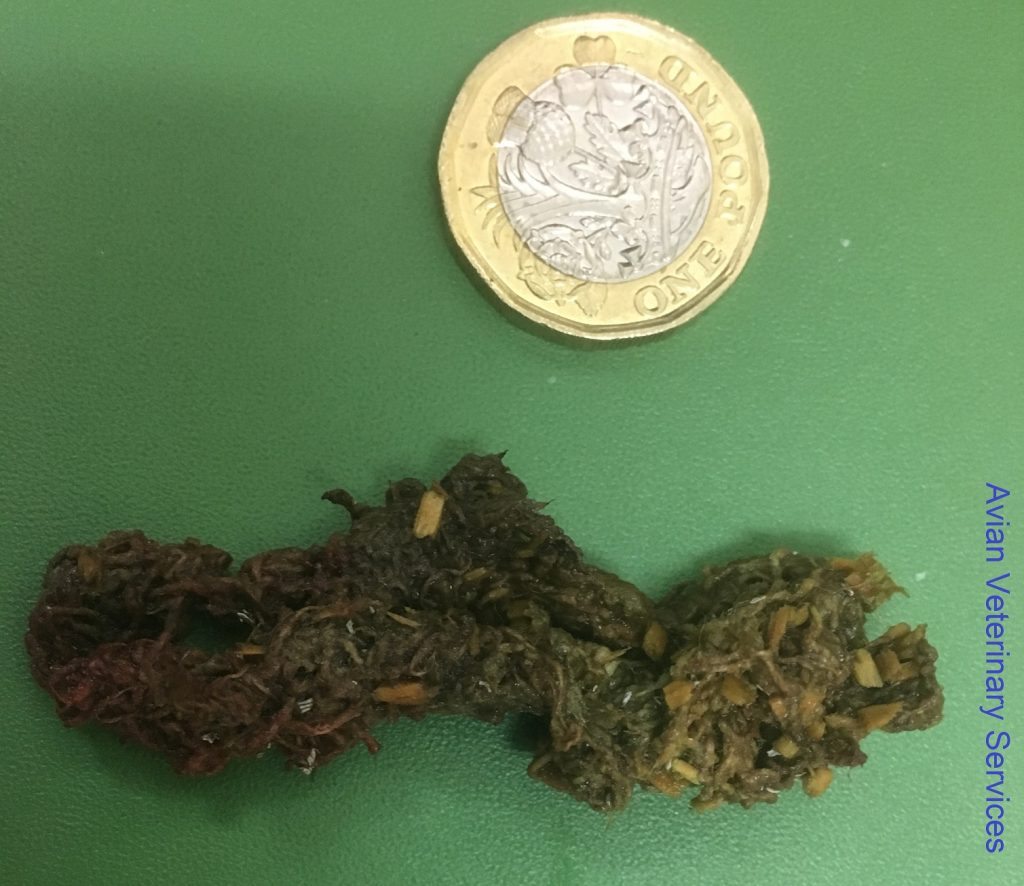
With him losing weight rapidly despite support feeding and medical management it was decided exploratory surgery was his only hope, as from clinical experience such large, likely fibrous masses, are virtually impossible to remove via flushing or endoscopic forceps.
Gus was prepared for surgery and underwent a ventriculotomy where, using magnifying loupes and microsurgical instrumentation, a transabdominal incision exposed the gizzard, which was isolated and elevated using ‘stay’ sutures and entered via a small area of thin muscle at the bottom end. The remainder of this organ is comprised of thick muscle that as well as bleeding extensively if traumatised, can shear through any stitches due to the powerful contractions that normally grind ingested food, resulting in wound breakdown and potentially life-threatening peritonitis/coelomitis (overwhelming abdominal infection).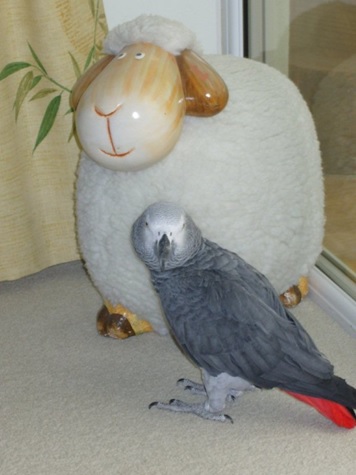
Once inside the ventriculus, the mass was grasped with forceps, gently removed in its entirety and the incision closed with tension relieving sutures.
Thankfully with intensive nursing/support feeding and slow reintroduction of soft food Gus gradually improved until 3 days post op we were delighted to send him home once again eating his pellets and passing normal stools!
We soaked the mass and it turned out to be a ‘mat’ of fibres from one of his favourite rope toys that he had, in hindsight, probably been ingesting a small amount at a time until it eventually got to the size that it obstructed.
Gus has obviously been banned from his fibrous rope toys / perches and now has access to leather / wood / plastic toys only.
Given the number of birds we see that quite happily and safely use rope toys / perches this was an odd and extremely rare presentation, but worthy of note and a warning to keep an eye on what your parrot may actually be eating and not just chewing.
We would like to stress that by no means do we want to panic people into not using such products as if carefully selected, have many benefits to both the parrots physical and mental well-being, but like anything else careful observation is key.
On the subject of ingested foreign bodies what follows are a few recent cases that also required surgical intervention.

The first was a young Macaw, ‘Captain Howdy’ who presented vomiting after ingesting the rubber tubing from what is sold as a ‘parrot hand rearing syringe’.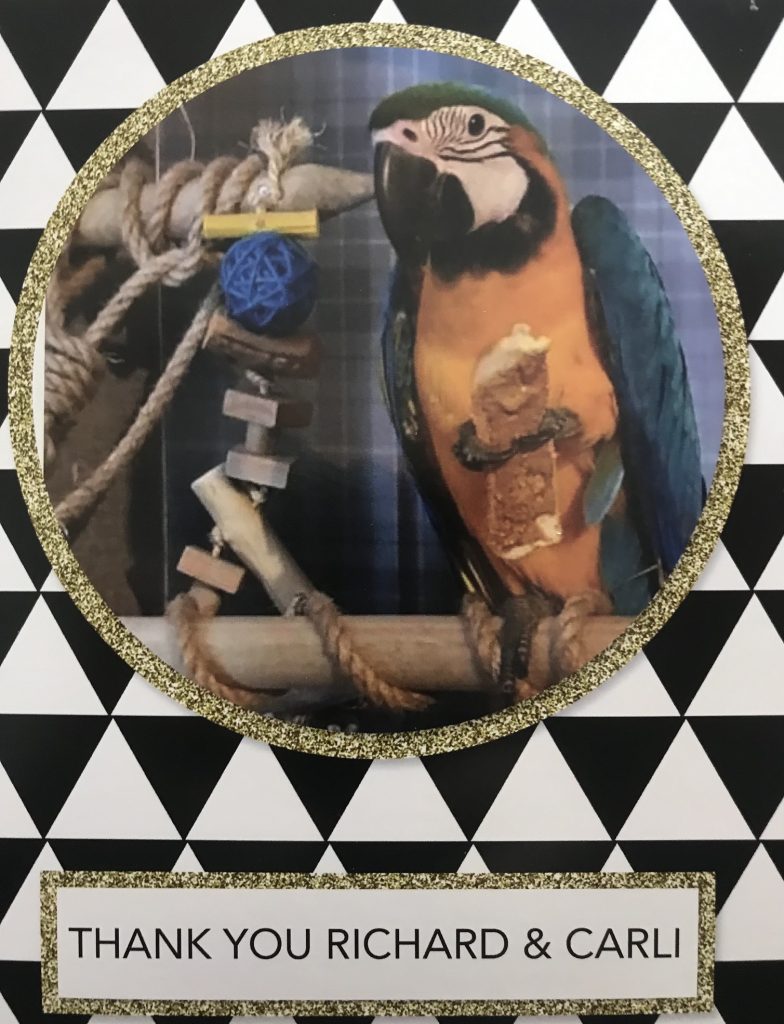
With such tubing just pushed onto the end of the syringe it is only a matter of time before it works loose and may be swallowed during the frantic feeding behaviour of a baby parrot and yet another reason we strongly recommend any juvenile psittacine should be fully weaned and not require any syringe/spoon ‘hand feeding’ on acquisition. Such tubing is actually the ‘perfect foreign body’ as its shape and size allow it to enter and subsequently plug the exit of the stomach, resulting in complete obstruction leading to rapid dehydration and if left unchecked death in many cases. Thankfully, the owners quick action allowed us to intervene in time and surgical removal as in Gus’s case resulted in a full recovery.
The second was a very unusual case where ‘Dee Dee’ an adventurous pet chicken whilst ‘foraging’ in the tool shed knocked over a box of screws which she rapidly set about eating in front of a her bemused owner and managed to ingest 16 in the few seconds it took for the owner to stop her!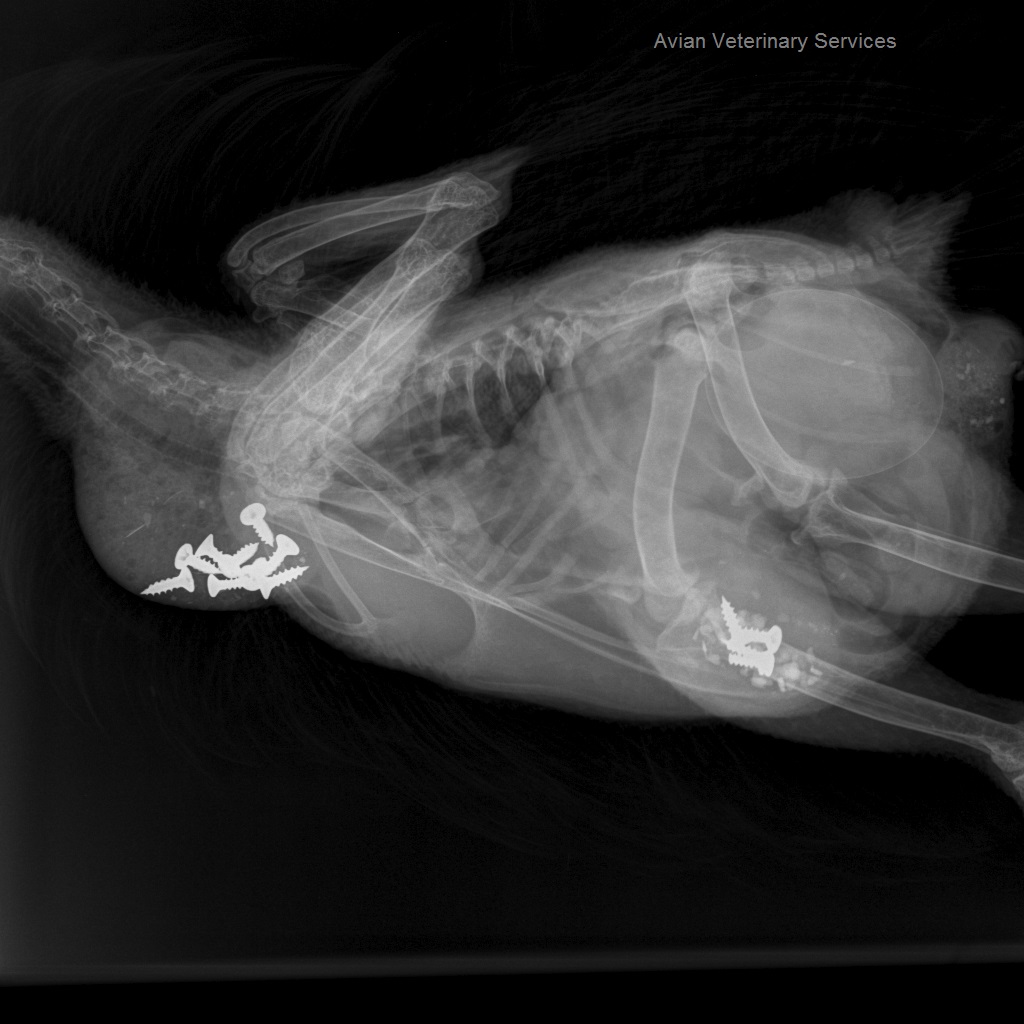
Again, with swift action on behalf of the owner and quick surgical intervention she lived to fight another day but with the tool shed now strictly out of bounds!!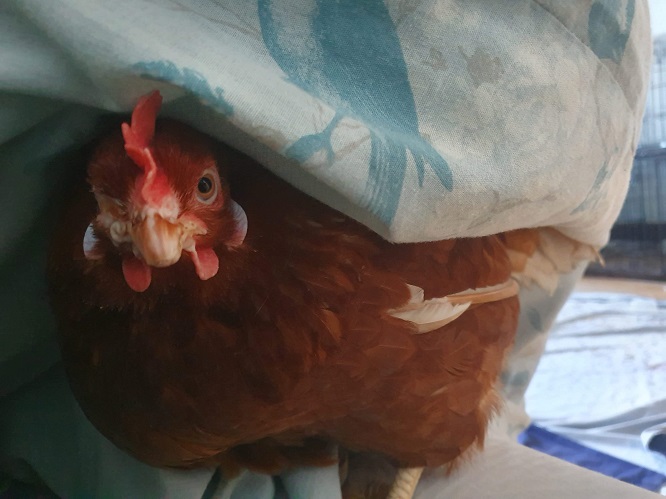
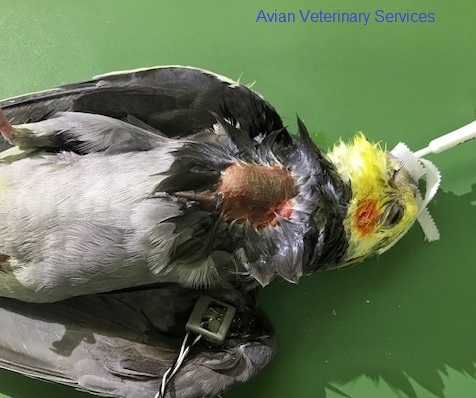
The most recent case was that of ‘Boris’ a cockatiel who had been nibbling on his sisal rope perch (unbeknownst to his owners) and over time created a mat of fibres that eventually caused a blockage in his crop. 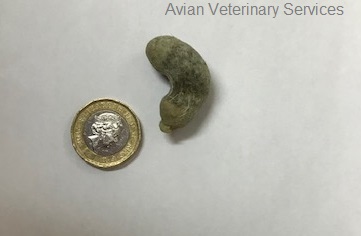 Happily, we were able to remove this and he is back on top form (and all rope perches / toys have been removed!).
Happily, we were able to remove this and he is back on top form (and all rope perches / toys have been removed!).
